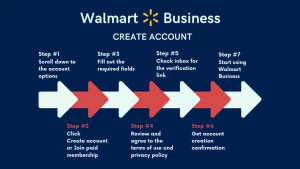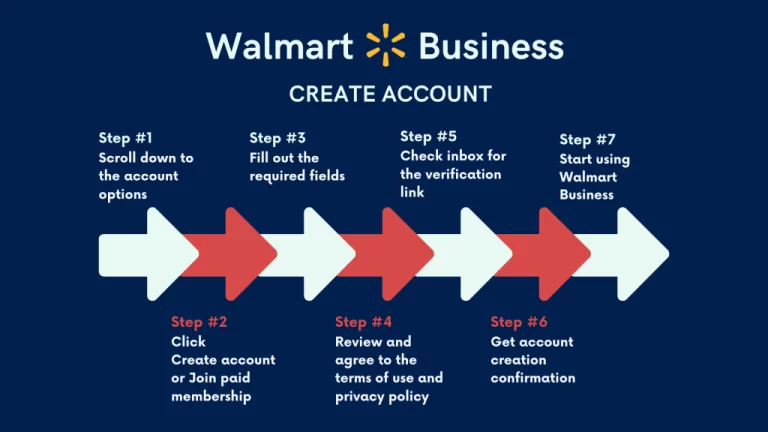Need for Speed: Boost Your Website Loading Time with These Proven Techniques
In this digital age, time is of the essence, and when it comes to website loading times, every second counts. No one wants to wait around for a website to load, and as website visitors, we expect them to be fast and efficient. Websites that take too long to load often lead to high bounce rates and low conversion rates. In fact, studies have shown that if your website takes more than 3 seconds to load, you may lose potential customers. So, what can you do to optimize your website loading time and keep visitors engaged? In this blog post, we’ll explore proven techniques to boost your website loading time, including optimizing images, using caching, minimizing HTTP requests, and more. By implementing these techniques, you’ll be able to improve the user experience, increase engagement, and ultimately boost your website’s success.

1. The importance of website loading time
In today’s fast-paced digital world, where attention spans are shorter than ever, the importance of website loading time cannot be emphasized enough. Studies have shown that users are quick to abandon a website if it takes more than a few seconds to load. In fact, a mere one-second delay in page load time can result in a significant decrease in customer satisfaction and conversions.
Think about it – how many times have you clicked on a website, only to be greeted by a spinning loading icon? Frustrating, isn’t it? Well, your customers feel the same way. In a matter of seconds, they will decide whether to stay and explore your website or hit that dreaded back button.
A slow-loading website not only drives potential customers away but also hampers your search engine rankings. Search engines, like Google, consider website speed as a vital ranking factor. A slow website will be penalized and pushed down in the search engine results, resulting in decreased visibility and organic traffic.
Furthermore, website loading time directly impacts user experience. A fast-loading website provides a seamless and enjoyable browsing experience, keeping visitors engaged and encouraging them to explore further. On the other hand, a sluggish website frustrates users, leading to high bounce rates and low user engagement.
In today’s competitive online landscape, where every second counts, optimizing your website’s loading time is no longer a luxury but a necessity. By investing time and effort into improving your website’s speed, you can significantly enhance user experience, increase conversions, and ultimately boost your online success. Stay tuned for the upcoming sections where we will explore proven techniques to optimize your website’s loading time and achieve lightning-fast speed.
2. How slow loading times impact user experience and conversions
Slow loading times can be a major frustration for website visitors, leading to a negative user experience that can significantly impact your conversions. In today’s fast-paced digital world, where attention spans are shorter than ever, users expect instant access to information and seamless browsing experiences.
When a website takes too long to load, it can lead to high bounce rates as impatient users quickly abandon the page and look elsewhere for their needs. Studies have shown that even a one-second delay in page load time can result in a 7% decrease in conversions. This means that if your website takes just a few seconds longer to load than your competitors’, you could be losing out on potential customers and revenue.
Slow loading times not only frustrate users but also affect your search engine rankings. Search engines like Google prioritize websites that provide a fast and smooth user experience. If your website is sluggish, it will likely be penalized in search engine rankings, pushing it further down the list of search results and making it harder for potential customers to find you.
Moreover, slow loading times can also impact your brand reputation. If users have a negative experience on your website, they are more likely to have a negative perception of your brand as a whole. They may assume that if your website is slow, your products or services may also be of lower quality or reliability.
To avoid these negative consequences, it is crucial to optimize your website’s loading time. By implementing proven techniques such as optimizing images, minifying CSS and JavaScript files, leveraging browser caching, and using content delivery networks (CDNs), you can significantly improve your website’s speed and enhance the user experience. Investing time and effort into improving your website’s loading time will not only boost your conversions but also help you establish a positive brand image and stay competitive in the digital landscape.
3. The correlation between website speed and search engine rankings
In today’s fast-paced digital world, where attention spans are getting shorter by the second, website speed has become a critical factor in determining the success of your online presence. Not only does a slow-loading website frustrate your visitors, but it can also have a significant impact on your search engine rankings.
Search engines, like Google, are constantly evolving to provide the best user experience possible. As part of their algorithm, they take into consideration various factors, one of which is the loading speed of a website. This makes perfect sense when you think about it – search engines want to deliver the most relevant and valuable results to their users, and a slow-loading website simply doesn’t align with that objective.
When a search engine’s crawler encounters a slow-loading website, it can negatively impact your rankings. This is because search engines prioritize websites that offer a seamless user experience, and a slow-loading website fails to meet that criterion. In fact, studies have shown that even a one-second delay in page load time can lead to a significant drop in conversions and user engagement.
Furthermore, website speed also plays a crucial role in your website’s bounce rate. If visitors are greeted with a sluggish website, they’re more likely to abandon it and look for faster alternatives. As a result, your bounce rate increases, sending a signal to search engines that your website may not be providing the value users are seeking.
To ensure your website ranks well in search engine results, it’s essential to optimize your website’s loading speed. This can be achieved through techniques such as optimizing image sizes, minifying CSS and JavaScript files, leveraging browser caching, and reducing server response time. By implementing these proven techniques, you can enhance your website’s loading time, improve user experience, and ultimately boost your search engine rankings.
Remember, in the race for online success, every millisecond counts. So, invest the time and effort in optimizing your website’s loading speed, and you’ll be rewarded with improved search engine visibility and increased user satisfaction.
4. Common factors that contribute to slow loading times
Slow loading times can be a major frustration for website visitors and can even lead to potential customers abandoning your site altogether. It is crucial to identify and address the common factors that contribute to slow loading times in order to provide a seamless and efficient user experience.
One of the primary factors that can slow down your website is the size and complexity of your webpage’s content. Large images, videos, and other media files can significantly impact loading times. Optimizing these elements by compressing images and videos, and using appropriate file formats can help reduce their size without compromising on quality.
Another common factor contributing to slow loading times is excessive HTTP requests. Each element on your webpage, such as images, scripts, and stylesheets, requires an individual HTTP request to be loaded. Minimizing the number of these requests by combining and minifying files, as well as utilizing browser caching, can greatly improve loading speeds.
The choice of hosting provider also plays a crucial role in website loading times. Shared hosting plans, for instance, can result in slower performance due to the resources being shared among multiple websites. Consider upgrading to a dedicated or virtual private server (VPS) hosting plan, which provides more resources and better performance.
Additionally, poorly optimized code and scripts can contribute to slow loading times. Clean and streamlined code can significantly reduce the time it takes for a webpage to render. Regularly reviewing and optimizing your website’s code can lead to noticeable improvements in loading speeds.
Finally, the geographical location of your website’s server can impact loading times for users located far away. Consider utilizing a content delivery network (CDN) to distribute your website’s content across multiple servers around the world, ensuring faster delivery to users regardless of their location.
By addressing these common factors that contribute to slow loading times, you can optimize your website’s performance and provide visitors with a fast and seamless browsing experience. Implementing these techniques will not only improve user satisfaction but also boost your website’s search engine rankings, ultimately leading to increased traffic and conversions.
5. Technique 1: Optimizing image sizes and formats
Optimizing image sizes and formats is a crucial technique to boost your website loading time. Large and uncompressed images can significantly slow down your website, leading to a poor user experience and potential loss of visitors. By implementing this technique, you can ensure that your website loads quickly and smoothly, captivating your audience from the moment they land on your site.
To start optimizing your images, consider resizing them to the appropriate dimensions for your website’s layout. This simple step prevents unnecessary strain on your website’s resources, as browsers won’t have to resize the images to fit the designated spaces. Additionally, it’s essential to strike a balance between image quality and file size. Reducing the image file size without compromising its visual appeal is key.
Another vital aspect of image optimization is choosing the right file format. JPEG, PNG, and GIF are the most commonly used formats on the web, each with its own strengths and weaknesses. JPEG is ideal for photographs and complex images, as it offers high compression rates while maintaining reasonable image quality. PNG, on the other hand, is suitable for images with transparency or sharp edges, as it provides lossless compression. GIF is commonly used for animated images but should be used sparingly due to its larger file sizes.
In addition to resizing and choosing the appropriate file format, consider leveraging modern image optimization tools and plugins. These tools can automatically compress your images without sacrificing quality, resulting in smaller file sizes and faster loading times. Several online platforms and content management systems also offer built-in image optimization features, making it easier than ever to implement this technique.
By optimizing your image sizes and formats, you create a seamless browsing experience for your website visitors. Faster loading times not only improve user satisfaction but also positively impact your search engine rankings, as site speed is a crucial factor in search engine algorithms. So, invest time and effort into optimizing your images, and watch your website’s performance soar to new heights.
6. Technique 2: Minifying and compressing CSS and JavaScript files
One of the most effective techniques to boost your website loading time is by minifying and compressing CSS and JavaScript files. These files contain instructions and scripts that determine the visual appearance and functionality of your website. However, they can also add unnecessary bulk and slow down your website’s performance if not optimized.
Minifying these files involves removing any unnecessary characters such as white spaces, comments, and line breaks. This process reduces the file size significantly without affecting the functionality or appearance of your website. By removing these unnecessary elements, the browser can read and process the files faster, resulting in a faster loading time.
Compressing CSS and JavaScript files further reduces their size by using compression algorithms. This technique reduces the file size even more without sacrificing any functionality. Gzip compression, for example, is a widely used method that can greatly reduce file sizes and improve loading speed.
Implementing minification and compression techniques can be done manually, but it can be time-consuming and error-prone. Luckily, there are various tools and plugins available that automate this process. These tools can easily minify and compress your CSS and JavaScript files with just a few clicks, saving you time and ensuring optimal performance.
Remember, a faster loading time not only improves user experience but also plays a crucial role in search engine optimization. Search engines like Google consider website speed as a ranking factor, so optimizing your CSS and JavaScript files can help boost your website’s visibility in search results.
By implementing minification and compression techniques, you can significantly improve your website’s loading time, providing a seamless and fast browsing experience for your users. So, take the time to optimize your CSS and JavaScript files and reap the benefits of a lightning-fast website.
7. Technique 3: Enabling browser caching
Enabling browser caching is a highly effective technique to boost your website loading time. When a user visits your website, their browser stores certain elements of your website, such as images, JavaScript files, and CSS files, in a cache. This allows subsequent visits to your website to load much faster as the browser retrieves the cached files instead of fetching them again from the server.
By enabling browser caching, you can control how long these files should be stored in the user’s browser cache. This means that once a user has visited your website, the browser will remember the files and not request them again until the expiration time set by you.
To enable browser caching, you can add specific directives to the .htaccess file of your website. This file is located on the server and controls various aspects of website functionality. By adding expiration headers to the .htaccess file, you can specify how long different types of files should be cached.
For example, you can set a longer expiration time for static files like images, CSS, and JavaScript files that rarely change. On the other hand, you can set a shorter expiration time for dynamic files like HTML pages or frequently updated content.
Enabling browser caching not only improves the loading time for returning visitors but also reduces the load on your server. Since the browser retrieves cached files instead of requesting them from the server, it helps to reduce bandwidth usage and server load, resulting in a smoother and faster overall user experience.
Keep in mind that while enabling browser caching is beneficial, it’s essential to strike a balance between caching and timely updates to ensure your website remains up to date. Regularly review and update the expiration times for different files to maintain optimal performance.
By implementing browser caching, you can significantly enhance your website’s loading time, leading to improved user satisfaction, increased engagement, and ultimately, higher conversions.
8. Technique 4: Implementing lazy loading for images and videos
In today’s fast-paced digital world, where attention spans are shorter than ever, having a fast-loading website is crucial. One major contributor to slow website loading times is the heavy use of images and videos. However, there’s a technique called lazy loading that can significantly boost your website’s loading time and enhance the overall user experience.
Lazy loading is a technique that defers the loading of non-essential images and videos until they are needed. Instead of loading all media content at once when a user visits your website, lazy loading loads them only when they come into the viewport or are about to be scrolled into view. This means that initial page load times are significantly reduced, allowing your website to load faster and provide a seamless browsing experience.
Implementing lazy loading for images and videos is relatively straightforward. There are various plugins and libraries available for popular content management systems like WordPress and Magento that can automate the process for you. These tools analyze your web pages and automatically add the necessary code to enable lazy loading.
By implementing lazy loading, you can ensure that only the essential content is loaded initially, reducing the initial load time and improving the overall performance of your website. As users scroll down your web pages, the remaining images and videos are loaded progressively, ensuring a smooth and uninterrupted browsing experience.
Not only does lazy loading improve website loading times, but it also helps conserve bandwidth, especially for users on slower internet connections or mobile devices. By loading images and videos only when necessary, you can optimize your website’s performance for all users, regardless of their internet speed.
In conclusion, implementing lazy loading for images and videos is a proven technique to boost your website’s loading time and enhance user experience. By deferring the loading of non-essential media content, you can significantly reduce initial page load times and provide a seamless browsing experience for your visitors. Consider adopting this technique and watch your website’s speed soar to new heights.
9. Technique 5: Utilizing content delivery networks (CDNs)
Utilizing content delivery networks (CDNs) is a powerful technique to boost your website loading time and enhance the overall user experience. CDNs are a network of servers strategically located around the world, designed to deliver content efficiently to users based on their geographic location.
When a user visits your website, the CDN automatically detects their location and serves the content from the server that is closest to them. This drastically reduces the distance the data needs to travel, resulting in faster loading times.
Not only do CDNs improve loading speed, but they also help reduce server load and bandwidth consumption. By offloading static content, such as images, CSS files, and JavaScript libraries, to the CDN servers, your website’s main server can focus on handling dynamic requests, improving its performance and responsiveness.
One of the key advantages of using CDNs is their ability to handle sudden traffic spikes and high volumes of concurrent users. With multiple servers distributed globally, CDNs can handle heavy user loads without compromising the website’s performance or causing it to crash.
Additionally, CDNs offer extra security features that protect your website from DDoS attacks and other malicious activities. By filtering traffic and blocking suspicious requests, CDNs act as a shield, ensuring the security and integrity of your website.
Implementing a CDN on your website is relatively straightforward. Most CDN providers offer easy integration options, allowing you to configure your website to utilize their services seamlessly. Some popular CDN providers include Cloudflare, Akamai, and Amazon CloudFront.
In conclusion, leveraging content delivery networks (CDNs) is an effective technique to optimize your website’s loading time, enhance user experience, reduce server load, and improve security. By utilizing the power of CDNs, you can ensure that your website loads swiftly for users around the globe, keeping them engaged and satisfied.
10. Additional tips and best practices for improving website loading time
When it comes to website loading time, every second counts. Users expect websites to load quickly, and if they experience delays, they are more likely to abandon the site altogether. In addition to the techniques mentioned earlier, here are some additional tips and best practices to further improve your website loading time:
1. Optimize your images: Large image files can significantly slow down your website. Make sure to compress and optimize your images without compromising on quality. There are various tools available that can help you with this task.
2. Reduce HTTP requests: Each element on your webpage, such as images, scripts, and stylesheets, requires a separate HTTP request. Minimize the number of these requests by combining files, using CSS sprites, and removing any unnecessary elements.
3. Enable browser caching: Browser caching allows returning visitors to load your website faster by storing certain files locally on their device. By leveraging caching, you can reduce the number of requests made to your server, resulting in improved loading speed.
4. Minify your code: Remove any unnecessary characters, whitespaces, and comments from your HTML, CSS, and JavaScript files. Minifying your code reduces file size and improves loading time.
5. Use a content delivery network (CDN): A CDN is a network of servers located in different geographic locations. By using a CDN, your website’s content is cached and delivered from the server closest to the user, reducing latency and improving loading speed.
6. Limit the use of third-party scripts: While third-party scripts can add functionality to your website, they can also slow it down. Evaluate which scripts are essential and consider removing or optimizing the ones that are not necessary.
7. Monitor and optimize server response time: Slow server response time can significantly impact your website’s loading speed. Regularly monitor your server’s performance and consider upgrading your hosting plan or implementing caching techniques to improve response time.
Remember, website loading time is crucial for both user experience and search engine rankings. By implementing these additional tips and best practices, you can ensure that your website loads quickly, providing a seamless browsing experience for your visitors.
11. Tools and resources to help measure and optimize website speed
When it comes to optimizing your website’s loading time, having the right tools and resources at your disposal can make a significant difference. These tools not only help you measure the current speed of your website but also provide valuable insights and recommendations for improvement.
One such tool is Google PageSpeed Insights. This free tool analyzes the content of your web page and generates suggestions to make it faster. It provides a comprehensive performance report, highlighting areas that need attention and offering specific recommendations to optimize your website’s loading time.
Another popular tool is GTmetrix, which offers detailed performance reports along with actionable recommendations. It provides insights on various aspects such as page load time, total page size, and the number of HTTP requests. GTmetrix also allows you to compare your website’s performance against industry benchmarks, helping you identify areas where you need to improve.
Pingdom Website Speed Test is another valuable resource that helps you analyze your website’s performance from different geographical locations. It provides a waterfall breakdown of all the requests made by your website, allowing you to identify any bottlenecks and optimize them accordingly.
WebPageTest is a powerful tool that enables you to test and measure the performance of your website from different devices, browsers, and connection speeds. It provides a detailed report, including visualizations and performance metrics, to help you identify areas of improvement.
Additionally, there are several WordPress plugins available, such as WP Rocket and W3 Total Cache, that can help you optimize your website’s loading time by implementing caching mechanisms, minifying scripts and stylesheets, and optimizing images.
By utilizing these tools and resources, you can gain valuable insights into your website’s performance and take the necessary steps to optimize its loading time. Remember, a faster website not only improves user experience but also enhances your search engine ranking and conversion rates.
12. The importance of ongoing monitoring and maintenance
When it comes to website loading time, it’s not just a one-time fix. It’s an ongoing process that requires constant monitoring and maintenance. Why is this important? Well, for starters, a slow-loading website can drive visitors away and negatively impact your search engine rankings.
Regular monitoring allows you to identify any potential issues or bottlenecks that may be slowing down your website. This could be anything from large image files to outdated plugins or even server issues. By keeping a close eye on your website’s performance, you can quickly address these issues and ensure that your website is running smoothly.
Maintenance is equally important. This involves regularly updating your website’s software, plugins, and themes to the latest versions. These updates often include bug fixes, security patches, and performance improvements that can help boost your website’s loading time. Ignoring these updates can lead to compatibility issues and vulnerabilities that can slow down your website.
In addition to monitoring and maintenance, it’s also crucial to regularly optimize your website’s assets. This includes compressing images, minifying CSS and JavaScript files, and leveraging browser caching. These techniques can significantly reduce the file size and the number of server requests, resulting in faster loading times for your website.
By making ongoing monitoring and maintenance a priority, you can ensure that your website continues to deliver a lightning-fast user experience. Not only will this keep your visitors happy and engaged, but it will also help improve your website’s overall performance and boost your search engine rankings. So don’t overlook the importance of ongoing monitoring and maintenance – it’s the key to a high-speed website.
13. Real-life examples of websites that successfully improved their loading times
Improving website loading time is crucial for providing a seamless user experience and driving higher engagement. To inspire you in your quest for faster loading times, let’s take a look at some real-life examples of websites that have successfully implemented techniques to optimize their performance.
1. Airbnb:
Airbnb is a popular online marketplace for booking accommodations worldwide. They realized that a slow-loading website would negatively impact user experience and deter potential customers. To address this issue, they implemented a technique called lazy loading, which defers the loading of non-critical elements, such as images, until they are needed. This resulted in significantly faster page loads and improved overall user satisfaction.
2. Walmart:
As one of the world’s largest retailers, Walmart understands the importance of a fast-loading website. They implemented a technique known as content delivery network (CDN), which distributes website content across multiple servers located in different geographic locations. By doing so, they reduced the distance between the user and the server, resulting in faster loading times, especially for international visitors.
3. Etsy:
Etsy is an e-commerce platform focused on handmade and vintage items. They faced the challenge of handling a vast amount of product images while maintaining fast loading times. To overcome this, they optimized their images by compressing them without compromising quality. They also implemented caching techniques, which store frequently accessed data temporarily. These optimizations significantly improved their website’s loading speed and enhanced the user experience.
4. The Guardian:
The Guardian, a renowned news organization, recognized the importance of providing an optimized experience to its readers. They implemented a technique called lazy loading for images and videos, ensuring that only the content visible on the user’s screen is loaded initially. As users scroll down, additional content is loaded, reducing the initial load time and improving overall page performance.
These examples highlight the effectiveness of various techniques in improving website loading times. By learning from their success stories, you can implement similar strategies and optimize your own website’s performance, ultimately providing a faster and more enjoyable experience for your visitors.
14. Conclusion and the future of website performance optimization
In conclusion, optimizing website performance is crucial for providing a seamless user experience and boosting overall success. By implementing the proven techniques mentioned throughout this blog post, you can significantly improve your website’s loading time and ensure that visitors stay engaged.
As technology continues to advance, the future of website performance optimization is promising. With the emergence of new tools, technologies, and best practices, website owners will have even more opportunities to enhance their site’s speed and efficiency.
One exciting development is the adoption of progressive web apps (PWAs). These apps combine the best features of both websites and native mobile apps, delivering lightning-fast loading speeds and offline capabilities. As PWAs become more prevalent, businesses can leverage their benefits to provide an exceptional user experience and encourage customer loyalty.
Additionally, advancements in image compression algorithms, browser caching techniques, and content delivery networks (CDNs) will further contribute to faster website loading times. As developers continue to prioritize performance optimization, we can expect websites to become more efficient, responsive, and enjoyable to use.
In the fast-paced digital landscape, a slow-loading website can be detrimental to your online presence. By taking the necessary steps to optimize your website’s loading time, you can ensure that you stay ahead of the competition and provide an exceptional user experience for your visitors.
Remember, website performance optimization is an ongoing process. Regularly monitoring and fine-tuning your site’s speed will help you stay at the forefront of performance trends and technology. Embrace these techniques, adapt to future advancements, and watch your website thrive in the ever-evolving online world.














+ There are no comments
Add yours